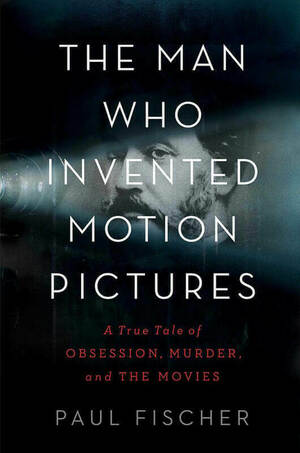Who invented the movies?
Many people would reflexively respond with names like Thomas Edison or the Lumière brothers of France.
But perhaps it was Louis Le Prince.
Louis who?

Abundant evidence indicates that Le Prince was the first successful creator of a device to capture moving images, as detailed in The Man Who Invented Motion Pictures: A True Tale of Obsession, Murder, and the Movies, by Paul Fischer (Simon & Schuster, 2022)
Fischer meticulously chronicles the life and career of Le Prince, a French-born artist and businessman who immigrated to England and later the United States, and makes a solid case that Le Prince must be considered the father of motion pictures.
For starters, just under two seconds of a film Le Prince shot in October 1888 in Leeds, England, still exists. Known as the “Roundhay Garden Scene,” it shows three Le Prince relatives and a family friend walking in the garden of the family home. The next month, Le Prince shot film of Traffic Crossing Leeds Bridge, of which a fragment of 20 frames survives.
Le Prince spent years and most of his family’s income perfecting a device — he called it a “taker” or a “receiver” — capable of capturing animated photographs. Granted patents in four countries and preparing to unveil his invention to the world, Le Prince made a quick visit to relatives in Lyon, France. Then he boarded a train on September 16, 1890.
And vanished forever.
Going to the latest summer blockbuster at the multiplex or binge-watching a popular series on Netflix, we rarely stop to think how revolutionary it must have been to see a motion picture for the first time.
Still photography in various forms had been around since the 1820s, but early images of real people moving in a picture shown on a wall must have seemed like magic — or sorcery.
Unlike many other innovators of the Victorian period, Le Prince pursued his work with no outside funding, no professional laboratory and no employees. “Louis had never designed or invented a machine of any kind in his life. Beginning with motion photography would be akin to a novice sailor setting off across the Atlantic for his maiden voyage,” Fischer writes.
The book includes cameo appearances by a who’s who of inventive minds of the era: Edison; Louis Daguerre, creator of the daguerreotype form of photography; Samuel Insull, later a Chicago-based utilities tycoon; Serbian-American inventor Nikola Tesla, who worked briefly for Edison; and W.K.L. Dickson, an assistant in the Edison lab who did most of the work of developing what became the Kinetoscope (a successful forerunner of the modern film projector), while Edison himself showed little interest because he didn’t see the commercial value.
Fischer also includes a look at the career of Eadweard Muybridge, a British-born photographer (and murderer) known for his pioneering work in the photographic studies of motion.
Edison doesn’t come across as heroic in Fischer’s account. The “Wizard of Menlo Park” left work on projects that didn’t interest him to his laboratory assistants. And instead of seeking patents, he often would file for “caveats” — a sort of prepatent by which an inventor could declare an intention to file a full submission as soon as an innovation was perfected, even if the work was barely begun. This had the effect of impeding competing inventors. If the patent office accepted a caveat, it often would result in a rival application being rejected for infringement — even when submitted by inventors who were much further along in perfecting an innovation.
What happened to Le Prince? Did he commit suicide? Was it an accidental drowning? Was he murdered? Was a close relative involved? Did Edison play a role in his disappearance, as Le Prince’s widow suspected? Fischer lays out the possible scenarios in tantalizing detail, including an 1890 morgue photo of a male corpse found in the Seine River that a documentary film crew stumbled across more than a century later.
Lizzie Le Prince, the inventor’s wife — educated and accomplished — is an intriguing persona in her own right. British by birth, Lizzie moved to Paris in the 1860s to study art, painting and pottery. She later held teaching jobs in both England and New York while raising four children, in an era when married women rarely worked outside the home.
Lizzie spent the decades of her widowhood fruitlessly trying to prove her late husband’s claim as the inventor of movies. The family was visited by tragedy repeatedly in the years after the inventor’s disappearance, including the death of one son and the institutionalization of another.
Fischer’s book is engrossing for its history of the development of motion pictures. But it also works as a mesmerizing whodunit. Le Prince’s disappearance and the various theories of what happened to him kept me reading right to the end of the footnotes.
It would make an excellent film.
Margaret Fosmoe is an associate editor of this magazine.